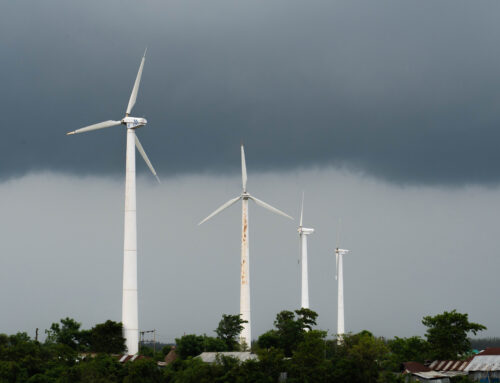Zorba Paster: Cannabis use disorder needs more attention
May 9, 2025
A recent article in JAMA Psychiatry from the American Medical Association got me thinking about cannabis use disorder. What is it? What does it mean? How do we address it? Recently, I talked about using cannabis for people with chronic pain and insomnia. Now I want to talk about overusing it and what that means.
First off, I’m a child of the ’60s. Smoking weed back in the day was something I did, like lots of my friends. We did that rather than drinking beer.
Yes, it was illegal, but then so is speeding on the highway, something I bet you’ve done sometime in your life that wasn’t kosher. I didn’t think much about it. But I did have friends who got stoned every day, day in and day out, and I always wondered about them. In fact, a relative of mine who died a few years ago from a lymphoma was a “stoner.” He got up every morning, reached for a joint and smoked continually throughout the day, every day, no matter what. He missed a lot of his kids’ soccer games, missed open house at their school and lots of other stuff because he was “too tired to go.” He’s a good example of a person with cannabis use disorder. So on to the definition.
This field is for validation purposes and should be left unchanged.
The Diagnostic and Statistical Manual of Mental Disorders, what we doctors use to describe psychiatric diseases, defines cannabis use disorder this way:
The presence of clinically significant impairment or distress in 12 months, manifested by at least two of the following:
- Cannabis is taken in larger amounts or used over a longer period than intended.
- Persistent desire to cut down with unsuccessful attempts.
- Excessive time spent acquiring cannabis, using cannabis or recovering from its effects.
- Cravings for cannabis use.
- Recurrent use resulting in neglect of social obligations.
- Continued use despite social or interpersonal problems.
- Important social, occupational or recreational activities foregone in favor of using cannabis.
- Continued use despite physical harm.
- Continued use despite physical or psychological problems associated with cannabis use.
- Tolerance.
- Withdrawal symptoms when not using cannabis.
Now, you may know someone who has this — if you need help, dial 988, which is the suicide and crisis number nationwide. This recent JAMA research I mentioned dealt with the convergence of cannabis and psychosis and the dopamine system.
Dopamine is a neurotransmitter hormone that plays a vital role in regulating motivation and reward. It’s often referred to as the “feel-good” hormone due to its role in pleasure and reward processing, as well as its impact on mood and behavior. Dopamine makes you feel good when you listen to music you like, eat great food, have great sex, enjoy others’ company. It’s dopamine that pops out of the hypothalamus, reminding us how good life is.
But drugs also can push out this brain hormone. Cocaine pushes it big, but alcohol and cannabis also push it out. So if you try to quit using, it can be hard.
The JAMA Psychiatry article went one step further, indicating that for some, the dopamine surge from cannabis might trigger psychosis. Why?
Cannabis induces “positive” psychotic symptoms — altered perception, delusions and suspiciousness. Let’s go into this a bit.
- Altered perception can include such things as the perception of time, heightened awareness of your surroundings and your space, what you’re eating, the music you’re hearing.
- Delusions can create a false belief or judgment about external reality, like an idea you have that seems really, really good at the time but the next morning doesn’t make sense.
- Suspiciousness means often coming up with paranoid thoughts, a lack of trust, a tendency to believe there is simply something wrong that you can’t explain. Paranoia about the police, for example.
Using MRI scanners, these researchers showed that those with cannabis use disorder had dopamine pathways in the brain that were similar to those that light up with actively stress-induced psychosis. It’s provocative research that is helping us understand how the brain works.
So, why does this matter? I have a couple of ideas.
First, we know daily alcohol use to inebriation isn’t good for you. We understand alcoholism and problem drinking much better than we did in the 1950s and ’60s. We now respect it as a problem in and of itself, thus developing treatments for it.
Cannabis use disorder — daily constant use — has increased dramatically since cannabis has become more available. But what’s more, that daily use to inebriation doesn’t have the stigma that alcoholism does. We don’t respect it as a problem, and that’s a problem. This new research shows that neurologically, cannabis use seems to share some of the pathways of psychosis. That means for some, smoking, vaping or ingesting cannabis can really be a serious problem.
My spin: Cannabis is here to stay and, like alcohol, it should be respected — with daily use posing a challenge and 24/7 use being a problem. Remember temperance and wisdom if you’re going to consume. Stay well.
This column is the opinion of the author, © Copyright 2025. Dr. Zorba Paster is a family medicine physician practicing in southern Wisconsin. Consult a health care provider for personal health information. The opinions expressed aren’t meant to reflect the views of Wisconsin Public Radio, its employees, the University of Wisconsin-Madison or the Wisconsin Educational Communications Board.
Zorba Paster On Your Health airs on WPR News Saturdays at 1 p.m. and Sundays at 6 p.m.
Search
RECENT PRESS RELEASES
Related Post



